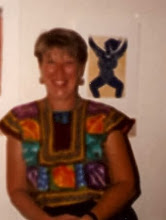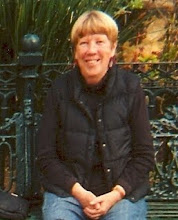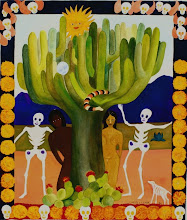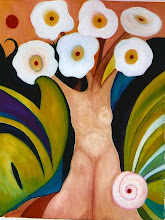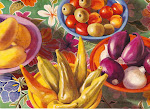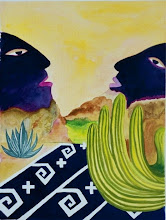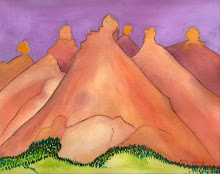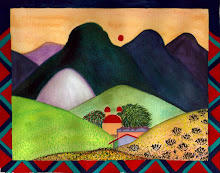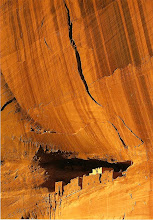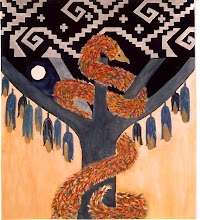
 Dancers dancing in the plaza in front of the church in Teotitlan
Dancers dancing in the plaza in front of the church in Teotitlan Closer view of dancers.
Closer view of dancers.Linda's (la malinche) family and support group with beer and fruit to give away at the dance.

The Danza de la Pluma in Teotitlan for the Virgin of
Guadelupe started with a 6:30 AM mass for the Dancers and their families in Teotitlan's beautiful church on December 12. After weeks of preparation the Dancers themselves appeared in the streets around 2:30. They and their extended families went to the church yard where a dance space had been created. Seating around the area went to the support groups, women in the front rows and men in the back rows. All five sections of Teotitlan were represented by one or more dancers. The Danza de la Pluma started at 3 PM in the afternoon. They danced for about 5 hours with very few breaks, dancing in their costumes with tall, round feathered headdresses, scarves and Virgin of Guadelupe capes. I was there to support Linda, Lichita and Ismael's 10 year old daughter, who danced one of the 2 Malinches. She danced the Native part. The other Malinche is dressed in a 16th century Spanish costume. The Danzantes finished their 3 year commitment to this Dance. It seemed somewhat emotional, being the end of their commitment. They are featured in a film on sale at the Museum in Teotitlan, made by some film makers from Santa Fe who filmed them 3 years ago, at the beginning of the cycle. I was there then too as a part of Linda's family.
After the Plumed Dancers finished dancing, their wives and mothers and fathers danced the Jarabe del Valle with jicapetxles filled with various candies..some are made in molds in Teotitlan-- white with red flowers on sticks. After these dances the five groups danced other jicapetxles and threw out sweets and fruit to the growing pueblo audience. Various parts of the ceremony took place with people dancing in a previously decided order called by a master of ceremonies.
The family I was with finally danced at 4:30 AM. Around midnight I slipped away after seeing various other friends in the church yard. At 4:30 AM I was sound asleep at Tito and Ale´s little adobe house on the edge of town. Reina and Piti Mendoza--Tito´s sisters gave me atole and tamales. That family was there to support another dancer.
Last night( Dec 29) the Teotitecas brought their beautiful costumbres (customs) to the Oaxaca Zocalo. I met up with my friends from there and other places to watch them make a calenda (religious parade) around the Zocalo and then dance--the Danza de la Pluma and the Jarabe del Valle again. The Danza de la Pluma group was the same that had just completed their 3 year term. It was wonderful to see them one more time. Linda danced well. Afterwards the Dancers were being photographed with friends and tourists in their costumes. They were the stars.
I was grinning ear to ear through the whole thing. Finally my friend Alicia (Linda's grandmother) and I were dancing the Jarabe together with others as the dance became public.
























































